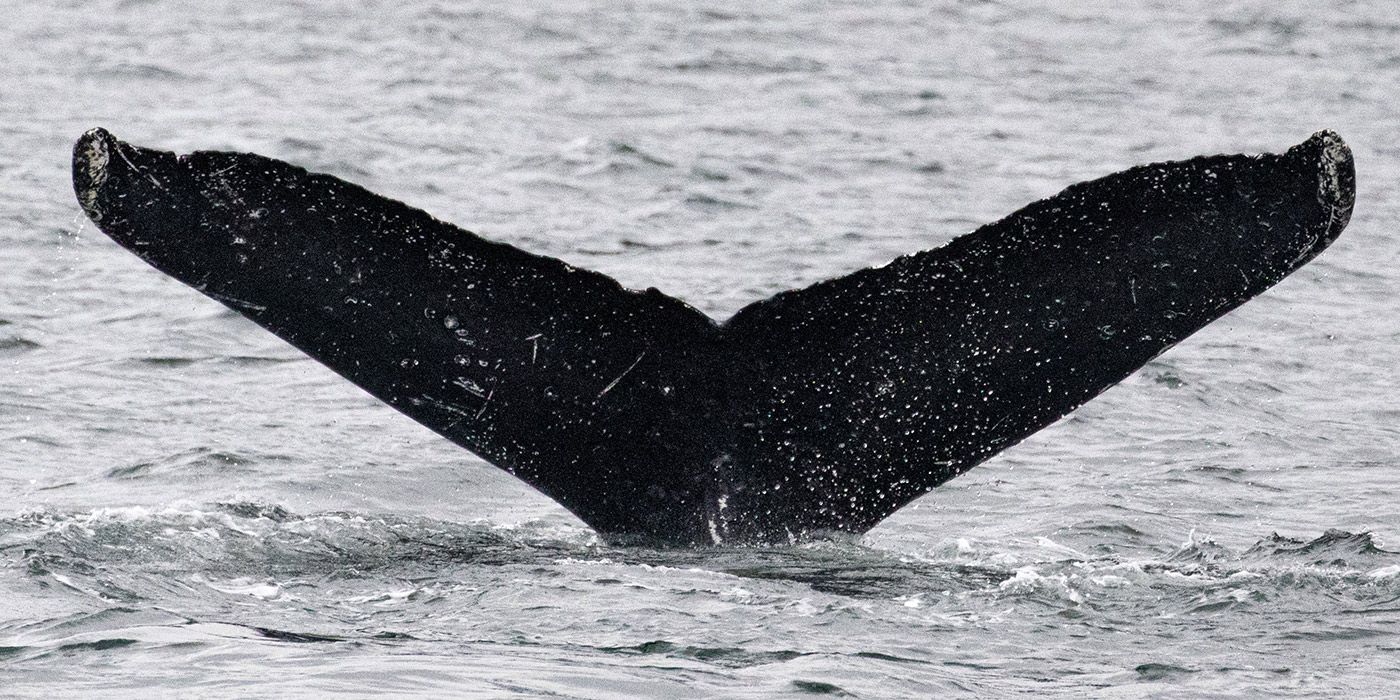What do you do when your job is to talk to extraterrestrial intelligence, but no one has found any? Go have a chat with the nearest thing. A team from the Search for Extraterrestrial Intelligence (SETI) Institute teamed up with whale researchers and had a 20-minute conversation with a humpback whale (Megaptera novaeangliae) named Twain.
Many people have wondered why researchers spend a lot of time and money trying to make contact with aliens who may not exist, while paying less attention to the giant brains with which we share the planet. SETI scientists decided to change that.
The collaboration voyaged into a humpback feeding ground off Southeast Alaska and played a contact call to see if any of the nearby whales responded. Twain arrived and spent 20 minutes in conversation with the calls the researchers had recorded the previous day from members of her own pod, including her.
“We believe this is the first such communicative exchange between humans and humpback whales in the humpback ‘language’,” Dr Brenda McCowan of the University of California, Davis said in a statement.
Exactly what Twain was saying is a mystery, although we’re guessing; “What are you doing on the water, not in it,” or “Beware orcas.”

Twain has quite a tale to tell her humpback friends, and a tail she showed the humans.
Image Credit: Jodi Frediani
Perhaps the bigger problem is we don’t really know what message the humans were playing to Twain through the recordings. There’s a danger the conversation was a version of the nightmare scenario when using a dodgy translator for a language you don’t understand and saying something like “Congratulations” in response to being told someone’s mother died.
Despite the risk of an interspecies faux pas, the researchers are excited. “Our results show that Twain participated both physically and acoustically in three phases of interaction (Phase 1: Engagement, Phase 2: Agitation, Phase 3: Disengagement),” the team writes in the paper.
To avoid skewing their results, the team had observers who could not hear the conversation looking at Twain’s behavior, so it could be matched to the timing of her vocalizations and the playing of recorded responses. They focused mainly on the time between calls, to confirm Twain’s vocalizations were made in response to those broadcast by the ship.
“Humpback whales are extremely intelligent, have complex social systems, make tools – nets out of bubbles to catch fish – and communicate extensively with both songs and social calls,” said Dr Fred Sharpe of the Alaska Whale Foundation.
Humanity’s capacity to communicate across the vast distances of space is quite limited, so at this point (unless aliens are very close by) we’re relying on more advanced civilizations to do most of the work for us. Dr Laurance Doyle of the SETI Institute notes this only works if the aliens want to chat with us and are willing to try to target receivers we can construct. “This important assumption is certainly supported by the behavior of humpback whales,” Doyle said.
That interpretation is open to question, of course. Perhaps Twain is an outlier, mocked by the other humpbacks – none of whom came within 200 meters (656 feet) of the boat – for talking with the humans. Maybe conversing with humans is a last desperate throw of the dice – if we have to share a planet, let’s try talking the bipeds out of cooking the place.
Despite these uncertainties, the team drew a parallel between talking with whales as a step to conversations with aliens and studying Antarctica or the Atacama Desert before we set foot on Mars. They hope at least it will help us learn how to assess the complexity of messages we receive but cannot yet understand.
The study is published open access in the journal PeerJ
Source Link: SETI Haven’t Found Aliens So They Chatted With A Humpback Whale Instead